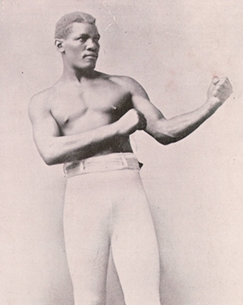*** FLASHBACK – this article originally appeared on dmboxing.com on August 24, 2012

By David Martinez / Boxing Historian / dmboxing.com
I agree with most boxing historians before me, that had Peter Jackson been born white, he would have been heavyweight champion in the John L 새찬송가 무료 다운로드. Sullivan era. In the late 1800’s Jackson never received a world title bout because of Sullivan’s refusal to fight black fighters, so racial prejudice was the only thing that kept Jackson from his chance to win the heavyweight crown 다운로드.
Jackson was a true pioneer and the first black heavyweight, before Jack Johnson, that set the stage for the top recognition of the black boxers, which was before the turn of the 20th century 1945 게임.
He was a polished boxer in every aspect of the game. He was well ahead of his time with ring generalship, with lightning hand speed and with excellent footwork.
His career started in Australia in 1882. In 1884 he lost a bid to win the Australian heavyweight title losing to Bill Farnan by knockout. He fought Farnan in a rematch draw two months later before Jackson would get another shot at that title two years later on September 28, 1886 when he won by a thirteen round knockout over then champion Tom Lees.
Jackson came to America in 1888 and in August of that year he won the World Colored Heavyweight Championship over George Godfrey, a title that he would hold for eight years before relinquishing it in 1896.
Jackson would travel overseas to Europe in October 1889 until December 1889, before returning to the U.S. In a fight that was billed as the two best heavyweights in the world as contenders for Sullivan’s title, he fought James J. Corbett on May 21, 1891, in San Francisco, California. The fight was under the Queensberry Rules with no time limit to a finish, with both fighters using 5-ounce gloves. The betting odds for the fight were 5 to 1 in favor of Jackson.
After four hours and five minutes, the bout was stopped with both fighters thoroughly exhausted after 61 grueling rounds. The fight was called a no-contest. After this epic battle, Corbett said “I soon discovered he was shifty and fast. And I thought I was fast! It was the hardest and fastest-paced distance fight I ever waged. I shook Jackson’s hand. I respected him.”
Because of Sullivan’s impenetrable “color line” which was un-crossable by Jackson, Corbett got the title fight instead of Jackson.
The following year, May 1892, Jackson traveled to London, England to fight Paddy Slavin and won by a 10th round knockout in a scheduled 20 round bout to capture the British Empire Championship. The fight was considered to be one of the best ever at that time in boxing and it had its own celebrity in attendance sitting ringside – Buffalo Bill.
The Slavin fight took its toll on Jackson and after contracting tuberculosis late in his career, though still competing, he wasn’t the same fighter of greatness he had been. At the end of his career in 1898, a 36 year old Jackson lost by 3rd round knockout to a young, upcoming, 22 year old, soon to be heavyweight champion, James J. Jeffries.
Ten years after the classic fight with Corbett, Jackson passed away on July 13, 1901, which was ten days after his 40th birthday.
Back in the days of Jackson’s career a lot of his bouts were ruled no decisions. Because of this, even though he engaged in 99 total fights, his official ring record is 44 wins, 3 losses, and 4 draws, with 31 knockouts.
Known as “The Black Prince”, Jackson was and is, even to this day, considered by many boxing experts in the prime of his career (1883-92) as one of the most complete heavyweights ever.